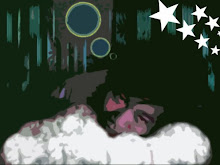It is very rare to see a black rhino, but in Nakuru you will see lots of white rhinos slowly eating grass
| Black Rhinoceros | White Rhinoceros |
| Name: White and Black Rhinoceros |
Scientific name:
|
| Range: Africa, Mostly in Kenya and Zimbabwe. |
| Habitat: White Rhinos are savanna dwelling grazers, while the Black Rhino is a browser living in forest and thorn scrub. |
| Status: Black Rhino is endangered, White Rhino is Vulnerable. |
| Diet in the wild: Water grass and leaves |
| Diet in the zoo: Hay, Lucerne chaff, horse cubes, carrots and bananas as a treat. |
| Location in the zoo: African Savannah |
| Physical description: Black rhino at Fort Worth Zoo showing pointed upper lip White Rhinos; Height 1.75 - 2.05 meters, weight between 3000 - 4000kg, head and body length 3.6 - 4.2 meters. Hips are lower than the shoulders.Their color is light gray; the tail is short and tasseled. There are two horns on the snout; the front one is usually longer. The upper lip is very broad and squared-off -- in fact the "weit" upper lip was the original basis for mistakenly calling this animal a "white" rhinoceros! White rhino close up, showing longer front horn and square lip |
| General information: Black rhinos are solitary animals, only coming together to mate. By contrast, the more gregarious white rhino only breeds successfully when there are small groups. The most lasting bond is between females and young, the calf staying with the mother for about five years. The black rhino is the more aggressive of the two species. It can move at speeds up to 40 miles per hour for short distances -- the speed of a race horse! Rhinos have poor eyesight and are likely to charge any suspicious moving object without provocation. Their hearing and sense of smell, on the other hand, are very good. White rhino males mate with any estrous female within their territory after a long courtship session. Mating lasts 20 to 30 minutes. The female bears a single calf; the calf suckles for at least one year but can eat grass at two months. The calf lives with the cow for around 3 years until the next calf is born. Black rhino with calf "Little One." |
| Special anatomical, physiological or behavioral adaptations: Black Rhinos Courting Rhinos are often accompanied by oxpeckers, tick birds and cattle egrets, which feed on insects stirred up by the rhino's feet, or living in the mud on their skin. |
| Personal Observations: White rhinos face off in courtship display |
| Current research: Sexual maturity: Female: 4-5 years; first calf at 6-8 years. Males 7-8 years; first territory at 10 years. Gestation 16 mouths. Life span up to 40 years. |
read more

Tidak ada komentar:
Posting Komentar